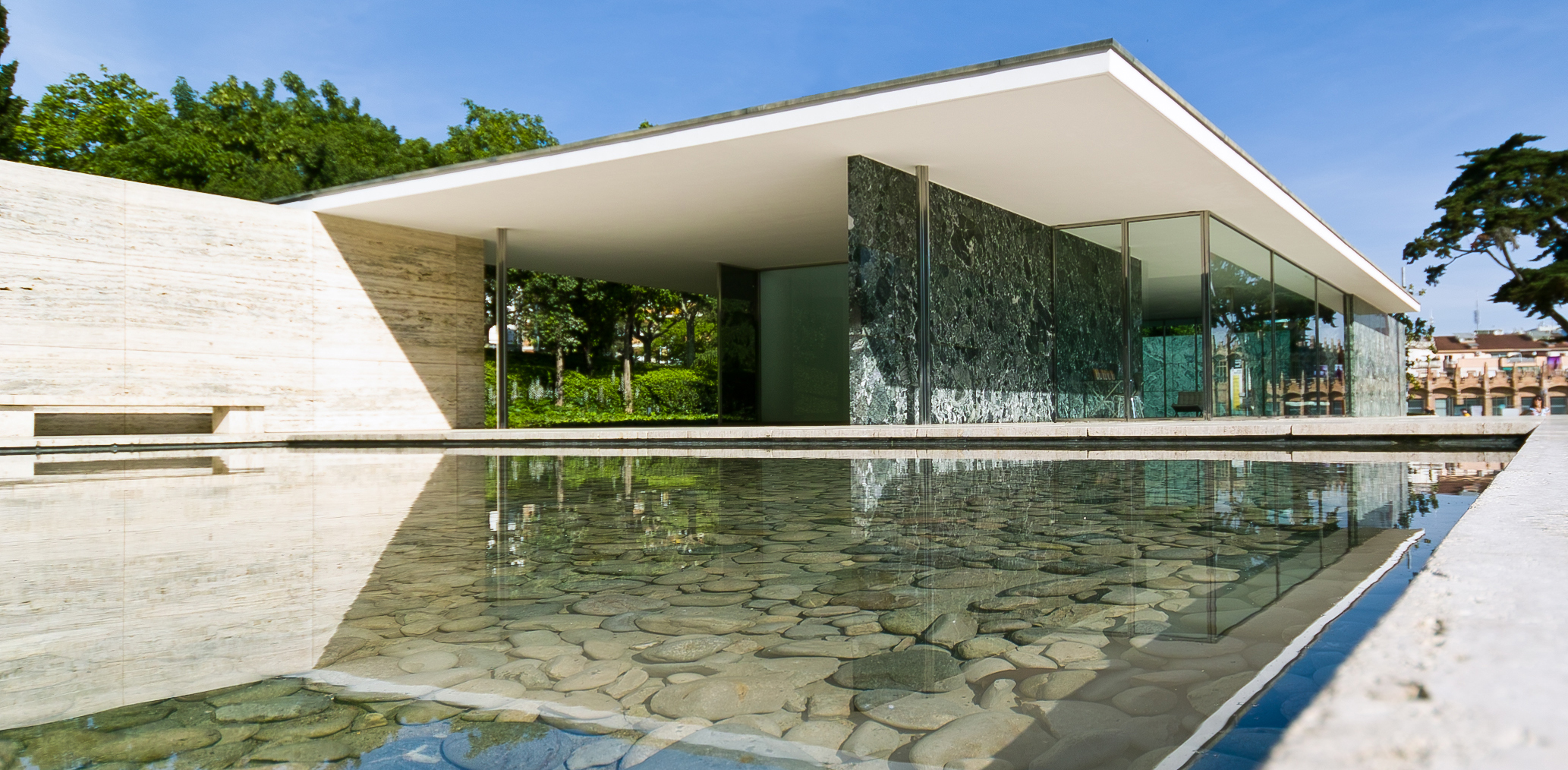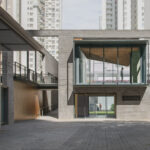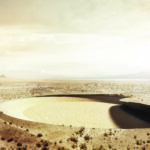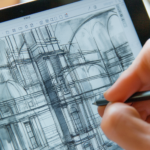There are few buildings in the world with a more distinctive aesthetic than the Barcelona Pavilion, designed by Mies van der Rohe and Lilly Riech. Originally constructed as the German Pavilion for the Barcelona International Exhibition in 1929, and rebuilt in 1986, this iconic building bears all the characteristics of the Modernist principles that Mies is famed for. The pavilion’s emphatic horizontality, open-plan layout and minimalist detailing are renowned, but the project’s use of materials are arguably its most defining quality.
Sumptuous yet cool, rich yet understated, the pavilion’s material palette celebrates the art of contrast. Monumental slabs of marble work in harmony with slender glass partitions and reflecting pools to create a serene space, worlds away from the hustle and bustle of the nearby city.
Here, we take a closer look at some of those iconic materials, revealing the ingredients behind one of the purest manifestations of Modernist architecture. To the right of each image, you can find a selection of samples inspired by each material — visit Material Bank to start curating your own board.
Travertine (floor and exterior walls)

Left: The Barcelona Pavilion; image by Wojtek Gurak. Right: Materials inspired by the pavilion’s travertine surfaces; samples via Material Bank
The most prominent material used throughout the Pavilion is Roman travertine, a luxurious yet hard-wearing material that anchors the projects. Travertine forms the plinth upon which the building sits, as well as the surrounding walls, which enclose the reflecting pool and provide a sense of separation from the outside world. Its color, a soft, yellowish hue, acts as a perfect backdrop for the bold materials placed throughout the building.
Featured Material Samples
- Travertine Ivory by Trendy Surfaces Learn More + Order Sample >
- Maderno Travertine by Material Bespoke Stone + Tile Learn More + Order Sample >
- Lux by Ann Sacks Learn More + Order Sample >
Golden Onyx (interior freestanding wall)
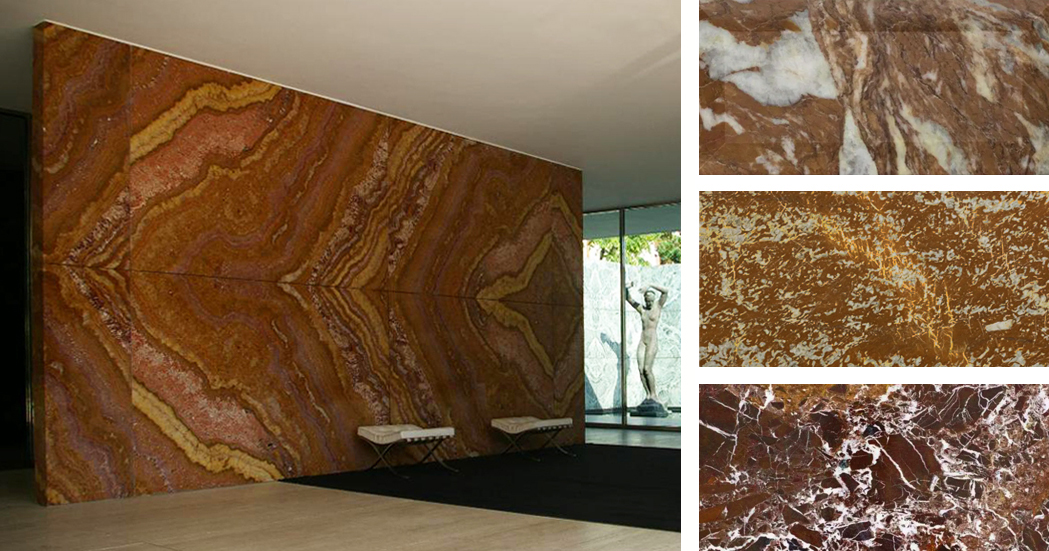
Left: Barcelona Pavilion interior; image by Martin D. Right: Materials inspired by the pavilion’s onyx wall; samples via Material Bank
At the heart of the building is a freestanding wall of golden onyx, sourced from the Atlas Mountains in Northern Africa. The uniquely patterned surface of this slab was revealed by a splitting process called broaching, enabling a symmetrical marbled pattern to be displayed across the wall’s entire expanse. In terms of color, amber hues transition into oranges and deep reds, providing a rich and complex finish that forms a focal point within the building’s interior. Interestingly, Carsten Krohn, author of Mies Van Der Rohe: The Built Work, states that “the honey-yellow onyx wall of the original is much redder in the modern reconstruction.”
Featured Material Samples
- Rosso Francia by Artistic Tile Learn More + Order Sample >
- Rosso Francia Marble Slab by Artistic Tile Learn More + Order Sample >
- Breccia Vino by Artistic Tile Learn More + Order Sample >
Green Marble (walls)
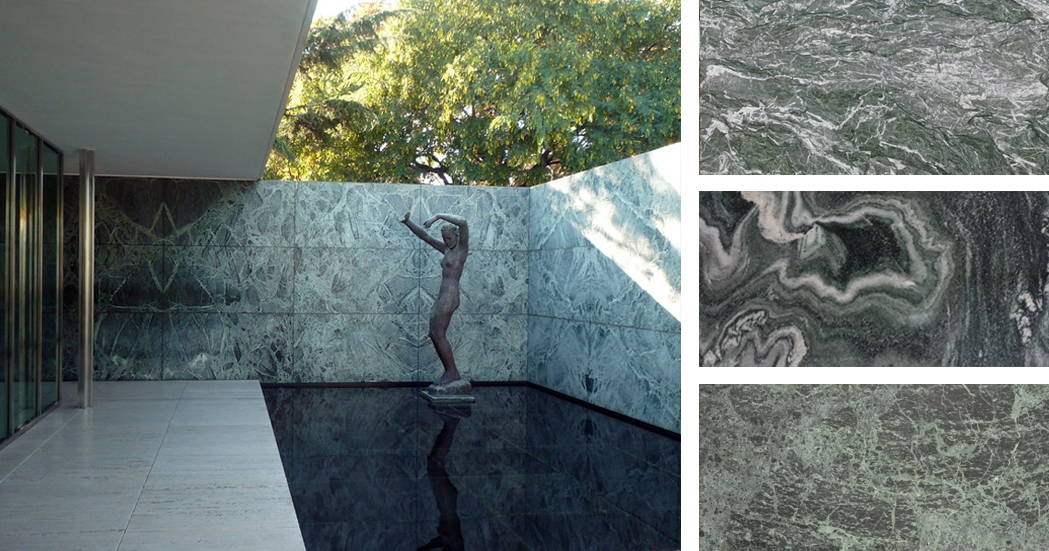
Left: Barcelona Pavilion exterior; image by Steven Zucker. Right: Materials inspired by the pavilion’s green marble walls; samples via Material Bank
Two types of marble with a green hue can be found in the Barcelona Pavilion: Polished green Tinian marble and “vert antique” marble, quarried in the French Alps. The hues of these walls range from deep green to gray-blue, contrasting with the lighter shades of travertine below and the pure white plane of the ceiling above.
Featured Material Samples
- Malachite Marble Slab by Artistic Tile Learn More + Order Sample >
- Verde Aurora by Artistic Tile Learn More + Order Sample >
- Verde Alpi by Artistic Tile Learn More + Order Sample >
Glass (walls)
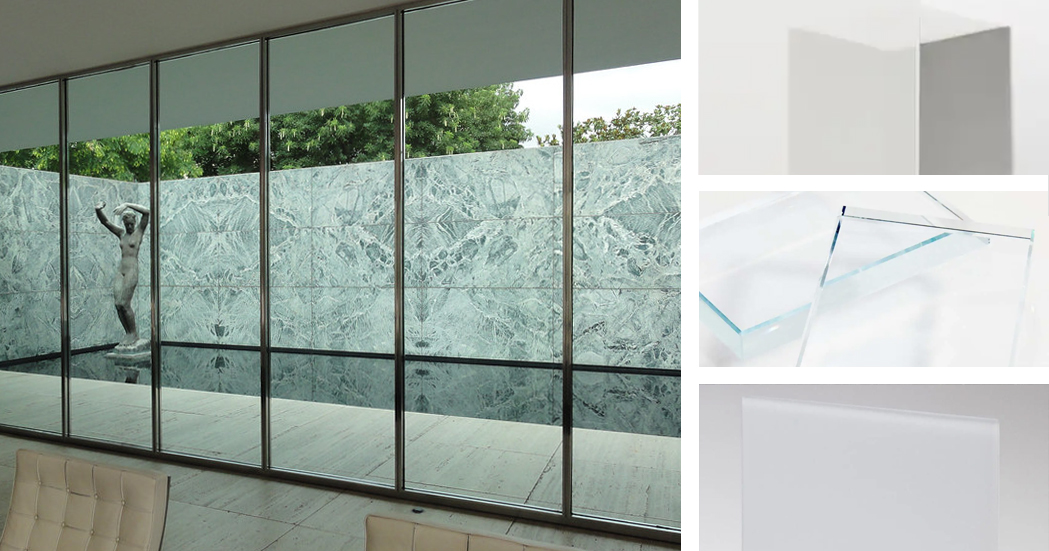
Left: Barcelona Pavilion glazing; image by Kent Wang. Right: Materials inspired by the pavilion’s glazing; samples via Material Bank
Mies employed a variety of glass materials throughout the pavilion, controlling the level of transparency, varying the sense of enclosure and framing specific views. According to Krohn, “an entire repertoire of materials have been employed: in addition to transparent glass, the building makes use of green and gray glass, frosted glass as well as black opaque glass for the table tops.” Together with the marble partitions, the glass panels of Mies’ pavilion challenge the conventional function of walls — rather than enclosing space, they act as devices to guide people through the building, channeling their path and blurring the boundaries between inside and out.
Featured Material Samples
- Color, Icy White, Transparent by CARVART Learn More + Order Sample >
- Starphire by Vitro Architectural Glass Learn More + Order Sample >
- Pressed Glass Neutrals by 3Form Learn More + Order Sample >
Stainless Steel (loading-bearing columns)
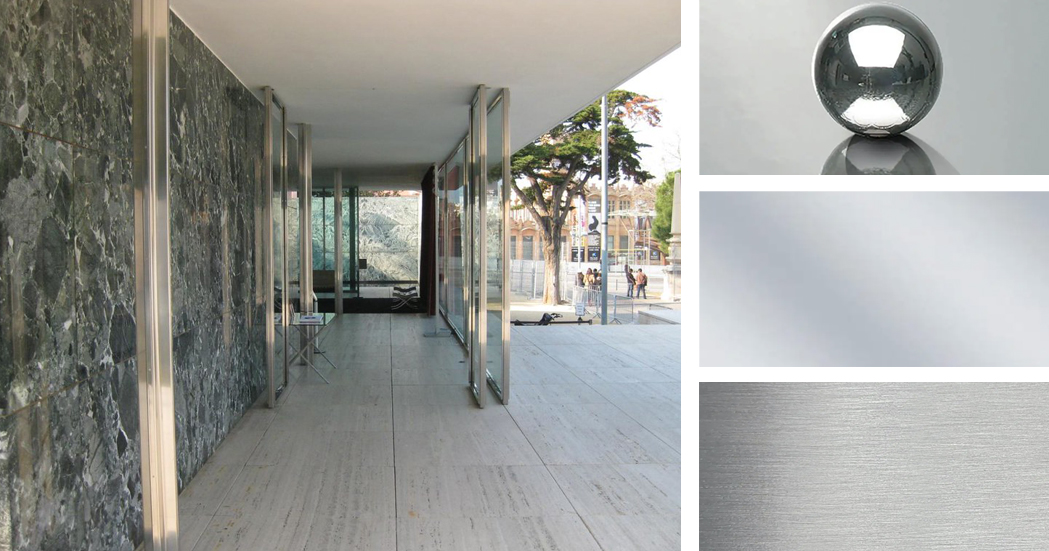
Left: Barcelona Pavilion interior; image by Rory Hyde. Right: Materials inspired by the stainless steel columns; samples via Material Bank
Key to Mies van der Rohe’s design was a set of eight polished steel columns that support the roof. As Krohn explains, “the columns form a structural unit that represents a separate architectonic element independent of the non-loadbearing partitioning walls.” Their cruciform shape provides the necessary structural rigidity, while their polished finish reflects light and flashes of color from the surrounding marble. It also echoes the reflective quality of the pools on the exterior or the building.
Featured Material Samples
- Polished Aluminum by Decorative Ceiling Tiles Learn More + Order Sample >
- Anodized Finishes by Muraflex Learn More + Order Sample >
- Classic Silk by Moz Designs Inc. Learn More + Order Sample >
Black Glass (reflecting pool)

Left: Barcelona Pavilion exterior; image by Steven Zucker. Right: Materials inspired by the black glass of the reflecting pool; samples via Material Bank
Black glass was used to line the smaller of the two pools within the Barcelona pavilion, designed to heighten the reflective quality of the water and dramatize the solitary ornament within the building: a bronze reproduction of Georg Kolbe’s sculptural figure, entitled “Dawn”. Both the sculpture and the patterned marble walls behind it are perfectly reflected in the water, their curves contrasting with the perfectly straight lines that define the space.
Featured Material Samples
- Pressed Glass Neutrals (Graphite) by 3Form Learn More + Order Sample >
- Pressed Glass Neutrals (Gotham N40) by 3Form Learn More + Order Sample >
- DecorOpal Color Collection by OmniDecor Glass Design Learn More + Order Sample >
Ivory Leather (Barcelona Chairs)
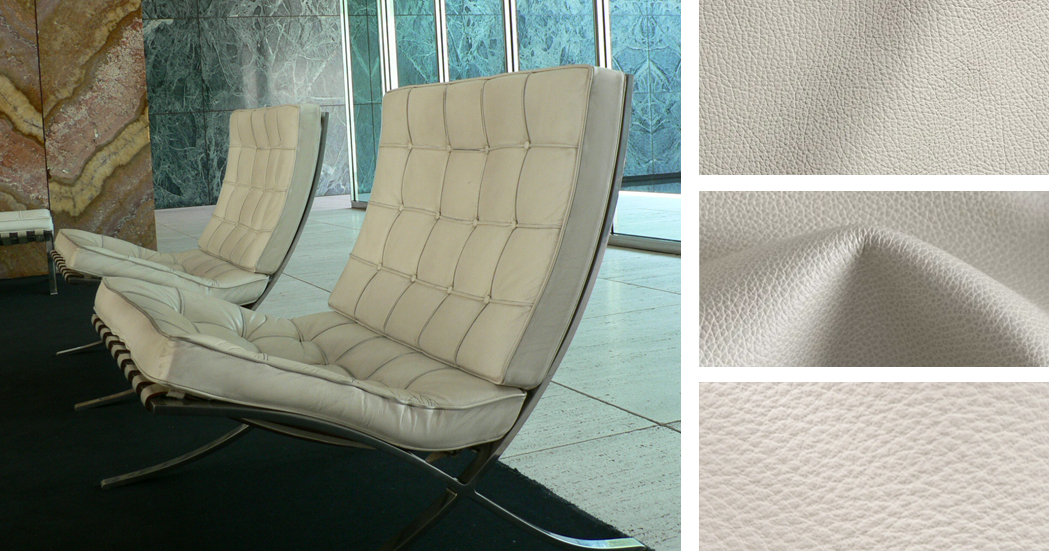
Left: Interior featuring the Barcelona Chair; image by Yuichi. Right: Materials inspired by the Barcelona Chair; samples via Material Bank
Designed by Mies van der Rohe himself, the Barcelona Chair is an icon of modern design, to such an extent that faithful reproductions are still produced and sold today. The structure of the chair is polished stainless steel, echoing the cruciform columns of the pavilion. The back and cantilevered seat are upholstered with off-white kid leather, with welt and button details. MoMA sums it up best: “The Barcelona Chair achieves the serenity of line and the refinement of proportions and materials characteristic of Mies van der Rohe’s highly disciplined architecture.”
Featured Material Samples
- Softy by Optima Leathers Learn More + Order Sample >
- Portmanteau by Moore & Giles Learn More + Order Sample >
- Preston by CTL Leather Learn More + Order Sample >
Inspired by Mies? We invite you to create your own material mood boards using iconic architecture as your muse! Share your creations with editorial@architizer.com and we’ll publish a selection of the best on Architizer.
Top image: The Barcelona Pavilion via Wikimedia
